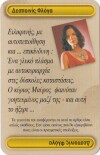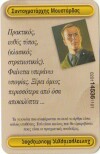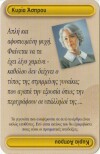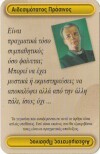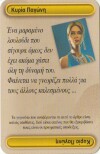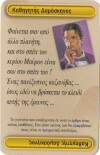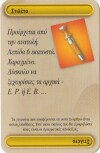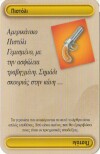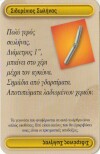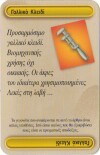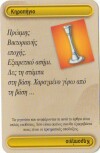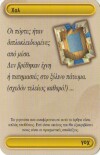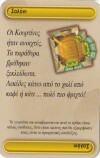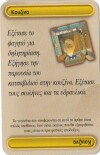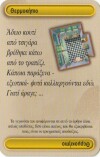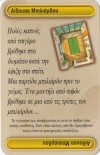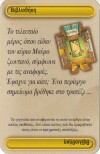Greek Cluedo Cards



(Images and information provided by Adrian Wright. See notes at bottom of the page. Click images to Zoom In.)
NOTE 1: Miss Flame: The colours scarlet and red are both covered by the word "kokkino" in Greek, but "Despoinis Kokkini" would have literally the same meaning as "scarlet woman", i.e. "whore".
NOTE 2: Kifisia = the posh suburb of Athens
NOTE 3: There is a discrepancy in the date of the murder between the box lid and the rule book.
The newspaper front page on the box lid reads:KATHIMERINI ICHO [DAILY ECHO]
Friday 6 June 1926
MYSTERY AT BLACK VILLA
The eminent anthropologist and man of letters, Mr Black, was found dead last night at his home in Kifisia, reports Kostas Papadopoulos, our correspondent at the scene of the crime...
However, the first page of the instruction leaflet reads:
I ICHO TIS KYRIAKIS [THE SUNDAY ECHO]
Sunday 8 June 1926
Murder of Mr Black
- investigators question suspects
Investigators today began questioning the suspects at the villa in Kifisia, home of Mr Black, where he was found dead on Friday evening...
Friday evening? Some confusion there!
NOTE 4: The price of each newspaper is given at 2.5 drachmas, which corresponds to about half a penny Sterling at the last pre-euro exchange rate of 340.75 dr = 1 euro.
Adrian used to think that 2.50 drs was far too expensive for 1926, given that the drachma was then a large solid silver coin, and was still subdivided into 100 "lepta". But I have since found out that 1926 was a year of great inflation in Greece. A loaf of bread cost 7.35 drachmas in Athens by the end of the year, so 2.5 drs seems quite cheap after all. (The silver drachmas were replaced by smaller nickel coins that year.)
